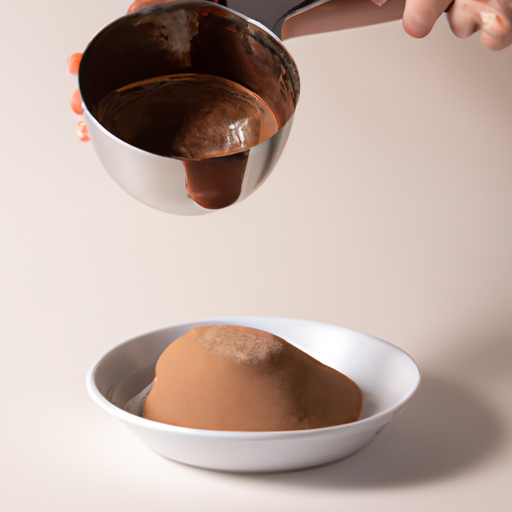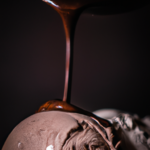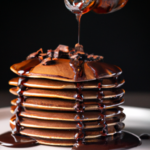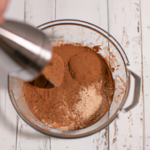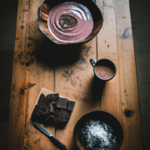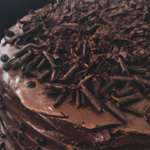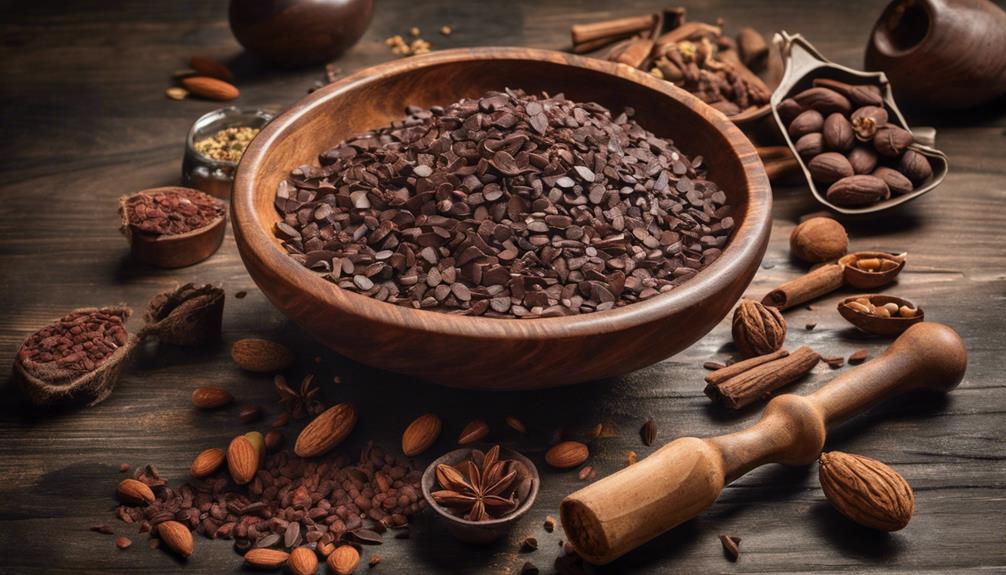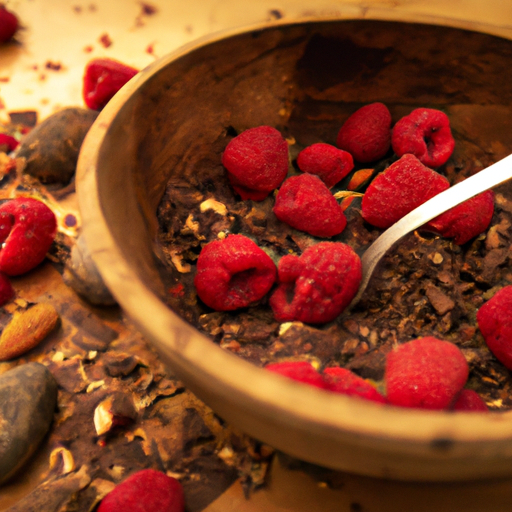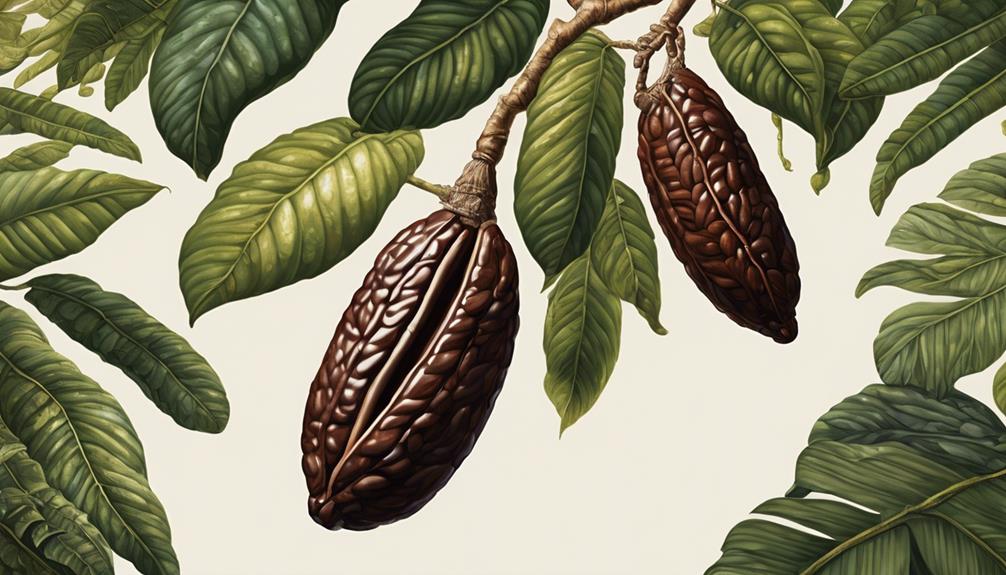Are you in the mood for a rich and creamy chocolate topping for your desserts? You don’t need to look any further than my fail-safe recipe that uses raw cacao powder. Treating yourself to the luxurious and decadent taste of homemade chocolate has never been simpler or more fulfilling.
Gather your ingredients and equipment, and let’s dive into this delightful culinary adventure. With just a few simple steps, you’ll be able to create a heavenly chocolate topping that will elevate your desserts to a whole new level of deliciousness.
First, melt the coconut oil, allowing it to transform into a smooth and silky base for our chocolatey masterpiece.
Then, add the raw cacao powder and sweetener of your choice, stirring until the mixture becomes perfectly combined. Adjust the sweetness and thickness to your liking, ensuring a personalized touch to your creation.
Once cooled and thickened, store your delectable creation in an airtight container, ready to be drizzled or spread on your favorite desserts.
Prepare to be enchanted by the wonderful taste and texture that this homemade chocolate topping will bring to your culinary creations. Get ready to indulge!
Key Takeaways
- Chocolate topping with raw cacao powder can be used in various ways, such as rimming martini glasses, mixing in cocktails, spreading on oatmeal cookies, and layering in parfaits.
- It offers several benefits, including being packed with antioxidants, protecting against oxidative stress and inflammation, and containing essential minerals like magnesium and iron.
- Experimenting with alternative sweeteners like maple syrup, honey, and coconut sugar can be a great way to customize the sweetness of the chocolate topping.
- Using chocolate topping with raw cacao powder enhances the flavor and sweetness of desserts, providing a healthier alternative to refined sugar and delighting the taste buds with its rich and decadent flavor.
Gather Your Ingredients and Equipment
Before you begin making your heavenly chocolate topping, gather all your ingredients and equipment. There are plenty of options to consider when choosing the right sweetener for your topping. Some people prefer maple syrup or honey for a natural sweetness, while others opt for sugar or agave syrup. You can also experiment with different variations by adding a pinch of sea salt for a savory twist or a dash of vanilla extract for a fragrant flavor.
In terms of equipment, you will need a mixing bowl, a whisk or a fork for stirring, and a measuring cup to ensure accurate measurements. Once you have everything ready, it’s time to move on to the next step: melting the coconut oil.
Melt the Coconut Oil
Start by melting the luscious coconut oil, allowing its smooth texture to envelop your senses. To achieve the perfect consistency, there are a few coconut oil melting techniques you can try. One option is to gently heat it in a double boiler, ensuring that the oil doesn’t get too hot. Another method is to place the coconut oil in a microwave-safe bowl and heat it in short bursts, stirring in between until it melts. Whichever method you choose, be careful not to overheat the oil as it can affect the taste and texture of your chocolate topping. Once the coconut oil has melted, you can move on to the next step of adding the raw cacao powder and alternative sweeteners.
Add the Raw Cacao Powder and Sweetener
Indulge your taste buds by blending in the rich essence of nature’s finest chocolate with a touch of sweetness. Add the raw cacao powder and your preferred natural sweetener. You can choose from options such as maple syrup, honey, agave nectar, coconut sugar, or stevia.
To achieve the desired thickness of your chocolate topping, adjust the amount of cacao powder and sweetener used. Start with a small amount and gradually add more until you reach the desired consistency. If the mixture becomes too thick, thin it out by adding a little bit of warm water or melted coconut oil.
Once you have added the raw cacao powder and sweetener, stir until smooth and well combined. This will ensure that the flavors are evenly distributed throughout the chocolate topping. Now, let’s move on to the next step of stirring until smooth and well combined.
Stir Until Smooth and Well Combined
Mix the cacao powder and sweetener until they blend together seamlessly, creating a luscious and irresistible concoction. Stir vigorously to ensure a smooth texture, free from any lumps or clumps. The key to achieving the perfect consistency lies in selecting the best sweeteners. Options like maple syrup, honey, or agave nectar work wonders, imparting a rich and natural sweetness to the chocolate topping. These sweeteners also contribute to the smoothness of the mixture, allowing it to glide effortlessly onto your favorite desserts.
Once the cacao powder and sweetener are well combined, you can proceed to adjust the sweetness and thickness to your preference. This step allows you to tailor the topping precisely to your liking, ensuring a delightful and personalized experience.
Adjust the Sweetness and Thickness to Your Preference
To personalize the sweetness and thickness of your delectable creation, there are a few steps you can take. Adjusting the sweetness is crucial for perfecting your chocolate topping. You can add sweeteners like honey, maple syrup, or agave nectar to enhance the taste. Start with a small amount and gradually increase until you reach your desired level of sweetness. Remember to taste as you go to avoid over-sweetening.
Finding the right consistency is equally important. If you prefer a thicker topping, add more raw cacao powder and stir until well incorporated. For a thinner consistency, gradually add liquid ingredients like milk or cream. Stir continuously until you achieve the desired texture.
Once you have adjusted the sweetness and thickness, it’s time to let it cool and thicken. This allows the flavors to meld together seamlessly.
Let It Cool and Thicken
Once you’ve adjusted the sweetness and thickness to your liking, allow the delectable mixture to cool and thicken. This will allow its flavors to meld together seamlessly. During the cooling process, the chocolate topping will gradually transform into the perfect consistency, ready to be drizzled over your favorite desserts.
To achieve the perfect consistency, follow these steps:
- Place the mixture in the refrigerator for at least 30 minutes.
- Stir occasionally to prevent a skin from forming on the surface.
- Check the thickness by dipping a spoon into the mixture and observing how it coats the back of the spoon.
- If it’s too thin, let it cool for a bit longer.
- If it’s too thick, add a small amount of warm water and stir until the desired consistency is reached.
Once the chocolate topping has reached the perfect thickness, it’s ready to be stored in an airtight container for future use.
Store in an Airtight Container
After achieving the perfect consistency, seal the delectable chocolate concoction in an airtight container, preserving its luscious flavors like a treasure chest.
For long term storage, it is important to choose the best containers to keep the chocolate topping fresh and ready to use whenever the craving strikes. Opt for glass or plastic containers with tight-fitting lids to prevent air and moisture from spoiling the rich flavor and smooth texture. These containers will also protect the chocolate from absorbing any odors or flavors from the surroundings.
Remember to leave some space at the top of the container to accommodate any expansion that may occur during freezing or refrigeration.
Once the chocolate topping is safely stored, it is now ready to be drizzled or spread on your favorite desserts, adding a heavenly touch of chocolatey goodness.
Drizzle or Spread on Your Favorite Desserts
Indulge in the decadent delight of drizzling or spreading this heavenly chocolate concoction onto your favorite desserts. The possibilities are endless when it comes to using chocolate topping with raw cacao powder. Not only does it add a rich and intense flavor, but it also provides a velvety texture that will elevate any dessert to a whole new level. From classic options like ice cream sundaes and brownies to more unique choices like pancakes and yogurt parfaits, the versatility of this chocolate topping knows no bounds. To inspire your creativity, here are some creative ways to incorporate chocolate topping into your desserts:
| Dessert | Description |
|---|---|
| Strawberries and Cream | Drizzle the chocolate topping over fresh berries, then top with a dollop of whipped cream for a decadent treat. |
| Banana Split | Layer sliced bananas, vanilla ice cream, and chocolate topping in a bowl. Top with whipped cream, nuts, and a cherry for a classic dessert. |
| Chocolate Martini | Rim a martini glass with chocolate topping, then mix vodka, chocolate liqueur, and cream for a luxurious cocktail. |
| Oatmeal Cookies | Spread a thin layer of chocolate topping on top of freshly baked oatmeal cookies for a delightful twist on a classic treat. |
| Greek Yogurt Parfait | Alternate layers of Greek yogurt, granola, and chocolate topping in a glass for a healthy yet indulgent dessert. |
With these different ways to use chocolate topping with raw cacao powder, you can truly elevate your desserts to new heights. Enjoy the rich and decadent flavor that this heavenly concoction brings to any sweet treat.
Enjoy the Rich and Decadent Flavor
Now that we’ve covered how to drizzle or spread chocolate topping on your favorite desserts, let’s delve into the current subtopic: enjoying the rich and decadent flavor.
When it comes to making chocolate topping with raw cacao powder, the benefits are numerous. Raw cacao powder is packed with antioxidants, which can help protect against oxidative stress and inflammation in the body. Additionally, it contains essential minerals like magnesium and iron.
To enhance the flavor of your chocolate topping, you can experiment with alternative sweeteners such as maple syrup, honey, or coconut sugar. These natural sweeteners not only add a touch of sweetness but also bring their unique flavors to the mix.
So, whether you’re drizzling it on ice cream or spreading it on a cake, the rich and decadent flavor of chocolate topping made with raw cacao powder is sure to delight your taste buds.
- Rich in antioxidants
- Contains essential minerals
- Adds a touch of sweetness
- Alternative to refined sugar
- Enhances flavor
Frequently Asked Questions
Can I use a different type of oil instead of coconut oil?
Yes, you can use different types of oils instead of coconut oil for your chocolate topping. Some alternatives include melted butter, olive oil, or almond oil. Experiment to find the taste and texture you prefer. Additionally, there are various sweeteners you can use, such as honey, maple syrup, or agave nectar.
How long does it take for the chocolate topping to cool and thicken?
To cool and thicken the chocolate topping, it usually takes around 15-20 minutes. However, to speed up the process, you can place it in the refrigerator for about 5-10 minutes. To prevent clumping, make sure to stir the mixture consistently while cooling.
Can I use a different sweetener instead of the one mentioned in the recipe?
Yes, you can use alternative sweeteners in the recipe for the chocolate topping. Some options include honey, maple syrup, or coconut sugar. These alternatives can provide different flavors and potential health benefits when combined with raw cacao powder.
How long can I store the chocolate topping in an airtight container?
The chocolate topping can be stored in an airtight container for up to two weeks when properly stored. Its shelf life can be extended by refrigerating it. Ensure it is tightly sealed to prevent moisture and odors from affecting its quality.
Can I use regular cocoa powder instead of raw cacao powder?
Yes, you can use regular cocoa powder instead of raw cacao powder when making chocolate topping. If you don’t have coconut oil, you can try using other alternatives like melted butter or vegetable oil in your recipes.
Can I Use Raw Cacao Powder to Make Chocolate Toppings?
Yes, making chocolate raw cacao powder can be used to create delicious chocolate toppings. Its rich, deep flavor adds a decadent touch to desserts, and its nutritional benefits make it a great alternative to traditional cocoa powder. Simply mix it with sweeteners and oils for a delectable chocolatey topping.
Conclusion
So there you have it, my friends! In just a few simple steps, you can create a delectable chocolate topping using raw cacao powder.
It’s a heavenly concoction that will take your desserts to a whole new level of deliciousness.
With its rich and decadent flavor, this homemade chocolate topping is sure to satisfy even the most discerning sweet tooth.
So go ahead and indulge yourself in this delightful treat, and let the euphoric taste transport you to chocolate heaven.
Enjoy!

